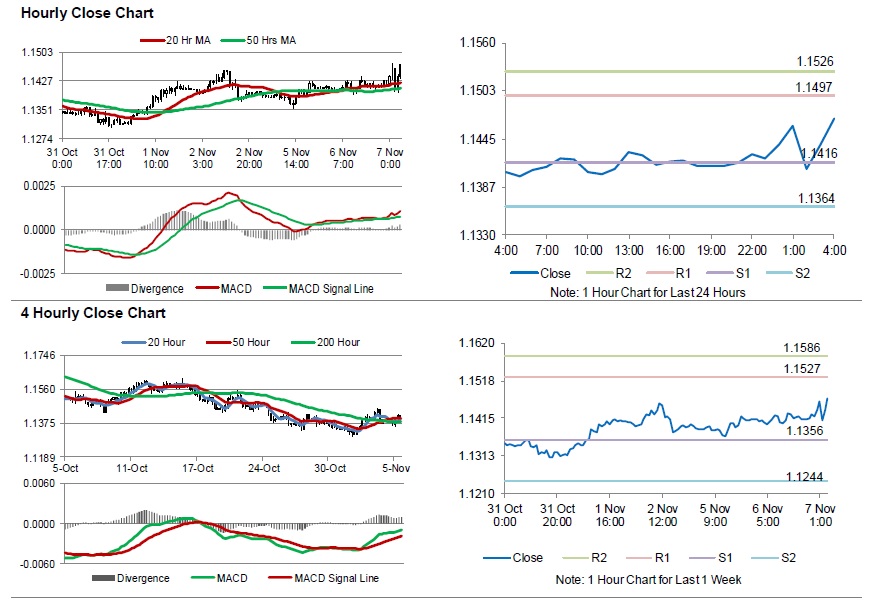For the 24 hours to 23:00 GMT, the EUR rose 0.09% against the USD and closed at 1.1421.
In the economic news, the Euro-zone’s final services PMI slid to a level of 53.7 in October, less than market expectations for a fall to a level of 53.3. In the previous month, the PMI had registered a level of 54.7, while preliminary figures had indicated a fall to a level of 53.3. On the other hand, the region’s producer price index (PPI) advanced 4.5% on a yearly basis in September, for the fifth consecutive month and compared to a revised gain of 4.3% in the prior month. Market participants had envisaged the PPI to rise to 4.3%.
Separately, in Germany, the final services PMI dropped to a level of 54.7 in October, compared to market expectations for a fall to a level of 53.6. The preliminary figures had also recorded a decline to a level of 53.6. In the previous month, the PMI had registered a level of 55.9. On the contrary, the nation’s seasonally adjusted factory orders unexpectedly advanced 0.3% on a monthly basis in September, defying market expectations to record a fall of 0.5%. In the preceding month, factory orders had registered a rise of 2.0%.
In the Asian session, at GMT0400, the pair is trading at 1.1469, with the EUR trading 0.42% higher against the USD from yesterday’s close.
The pair is expected to find support at 1.1416, and a fall through could take it to the next support level of 1.1364. The pair is expected to find its first resistance at 1.1497, and a rise through could take it to the next resistance level of 1.1526.
Moving ahead, traders would keep an eye on the Euro-zone’s retail sales for September along with Germany’s industrial production for September and construction PMI for October, slated to release in a few hours. Later in the day, the US MBA mortgage applications followed by consumer credit data for September, will garner significant amount of investors’ attention
The currency pair is trading above its 20 Hr and 50 Hr moving averages.

